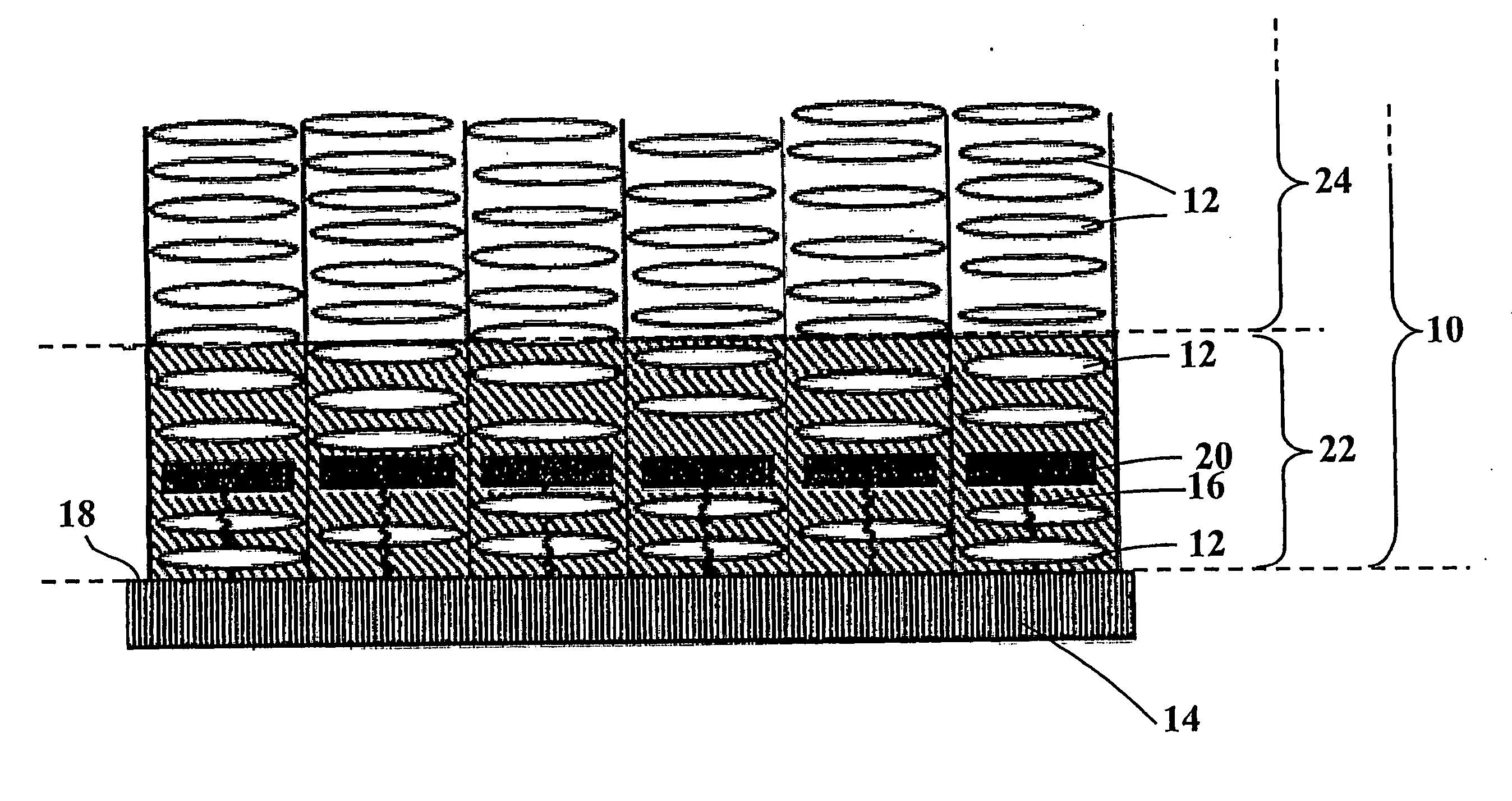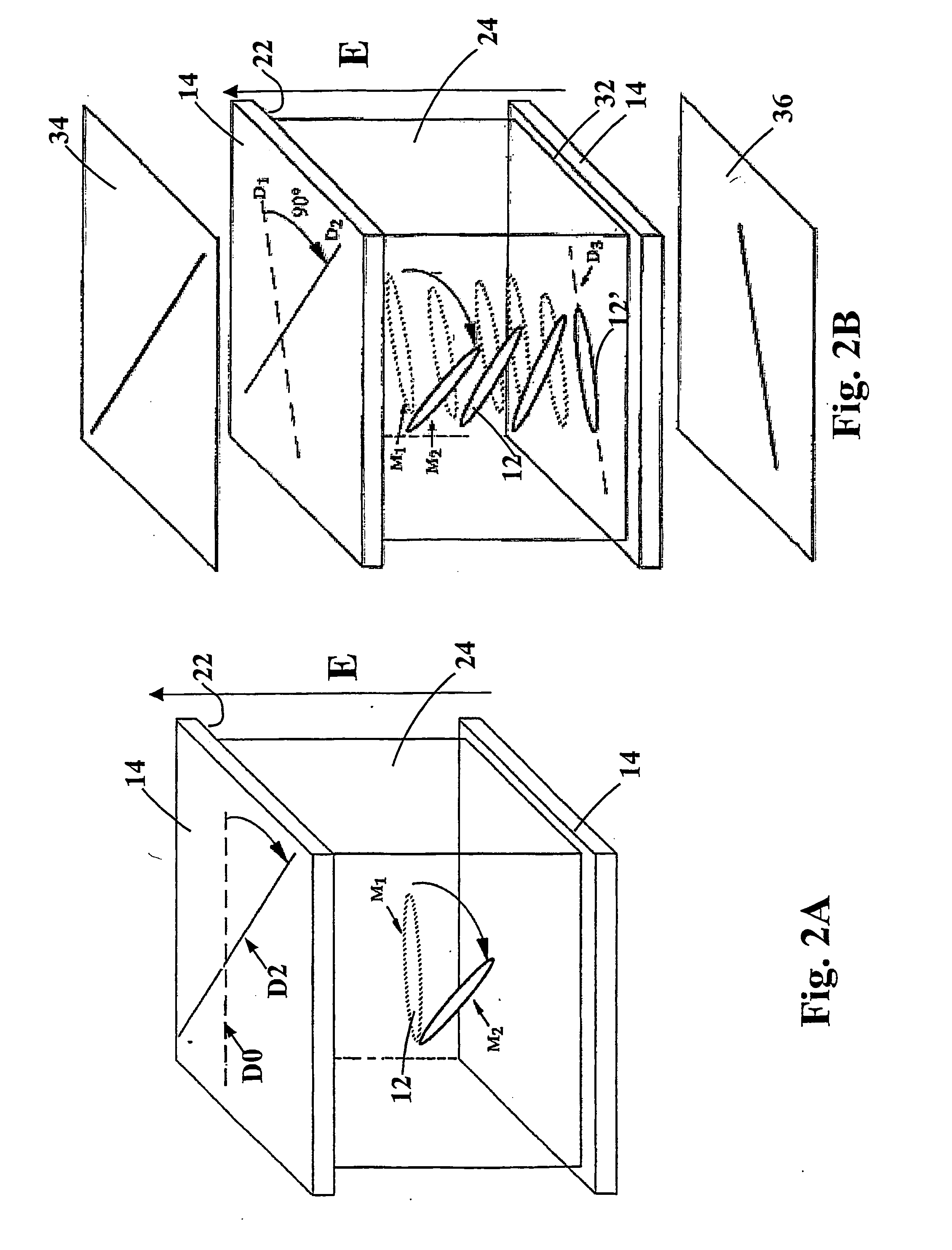Liquid crystal device, a method for producing a liquid crystal device and a method for controlling a liquid crystal device
a liquid crystal device and liquid crystal technology, applied in the field of liquid crystal devices, can solve the problems of non-satisfactory brightness and switching times, slow display, and fast display speed
- Summary
- Abstract
- Description
- Claims
- Application Information
AI Technical Summary
Benefits of technology
Problems solved by technology
Method used
Image
Examples
example 1
Method of Preparation
[0147] In one embodiment for the preparation of a chiral surface layer as illustrated in FIG. 3 or 4, the inner surface of the glass or plastic substrate 14 is first covered by transparent, conductive ITO film 30 and, thereafter, with an alignment layer 32 of e.g. a thin Au film, evaporated at normal incidence. The alignment layer 32 may be a passive alignment layer.
[0148] Then, the alignment layer 32 is covered by a thin film 20 comprising, in this example, a photosensitive organic material including chiral molecules 20. This chiral material 20 may be of the side-on type of attachment of chiral moieties at ortho- or meta-position anchored on to Au film through sulphur-containing group. The molecular structure of the organic chiral material 20 may be the following:
[0149] The substrate 14, which now has been covered by the thin layer of photosensitive chiral material 20, is exposed to linearly polarised UV light in order to obtain a unidirectional planar, pre...
example 2
Method of Preparation
[0150] In a second example, the chiral surface may be prepared by a thin film of organic material containing a mixture of chiral molecules of the same kind as in the Example 1 but in this case they possess different length of the coupling group as shown schematically below:
[0151] The length of the coupling group will define the maximum distance between the chiral dopant molecule and the surface. However, the chiral dopant molecule may be free to move in a direction towards the surface.
example 3
Method of Preparation
[0152] According to Example 3, in order to prepare a chiral surface forming e.g. the first thin film of chiral molecules 20 depicted in e.g. FIG. 4, the transparent conductive ITO film 30 of the glass substrate 14 is covered by a passive alignment layer 32 of buffed SiOx film, evaporated at normal incidence, for instance. As well known, this passive alignment layer gives unidirectional planar alignment of most liquid crystal materials. The same kind of alignment could be obtained by evaporating the SiOx film 32 at angle of incidence α˜60° with respect to the substrate surface 18. Thereafter, the passive alignment layer 32 is covered by a thin film of photosensitive organic chiral material 20 of the kind described in example 1. The molecules of this material may be permanently attached to the silica surface by the use of e.g. silylation.
PUM
| Property | Measurement | Unit |
|---|---|---|
| Temperature | aaaaa | aaaaa |
| Dielectric polarization enthalpy | aaaaa | aaaaa |
| Viscosity | aaaaa | aaaaa |
Abstract
Description
Claims
Application Information
 Login to View More
Login to View More - R&D
- Intellectual Property
- Life Sciences
- Materials
- Tech Scout
- Unparalleled Data Quality
- Higher Quality Content
- 60% Fewer Hallucinations
Browse by: Latest US Patents, China's latest patents, Technical Efficacy Thesaurus, Application Domain, Technology Topic, Popular Technical Reports.
© 2025 PatSnap. All rights reserved.Legal|Privacy policy|Modern Slavery Act Transparency Statement|Sitemap|About US| Contact US: help@patsnap.com



